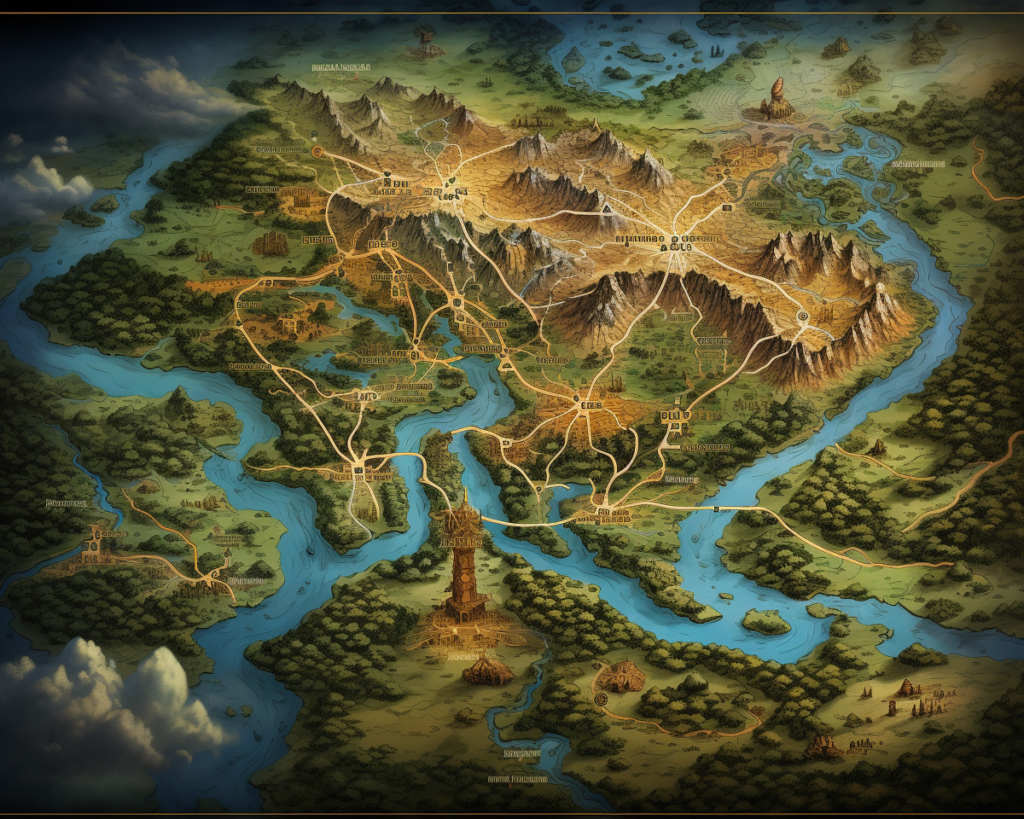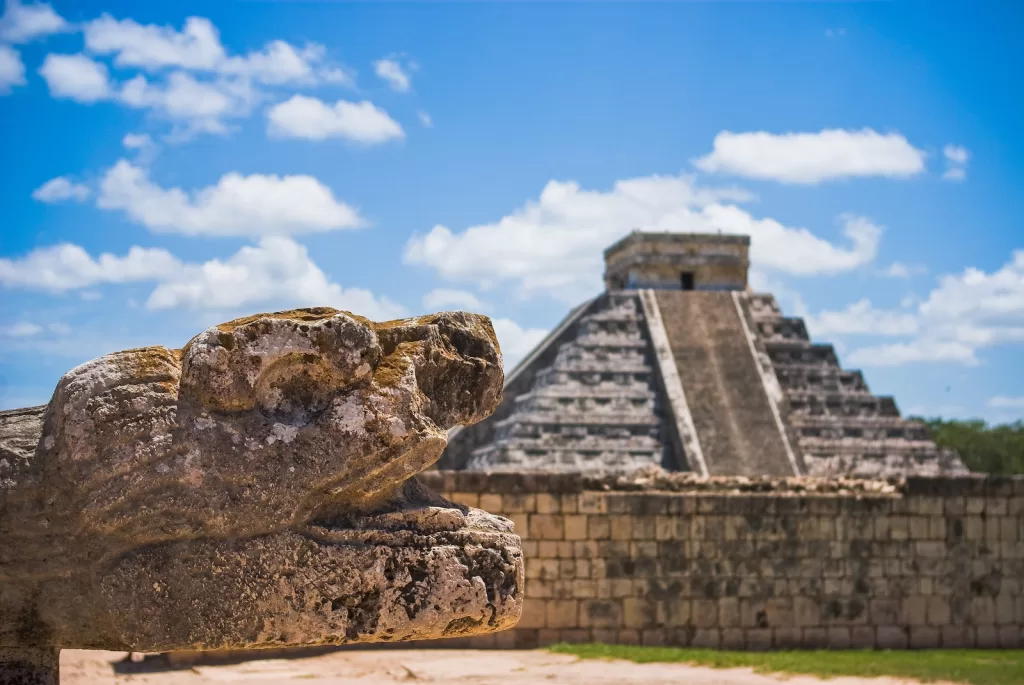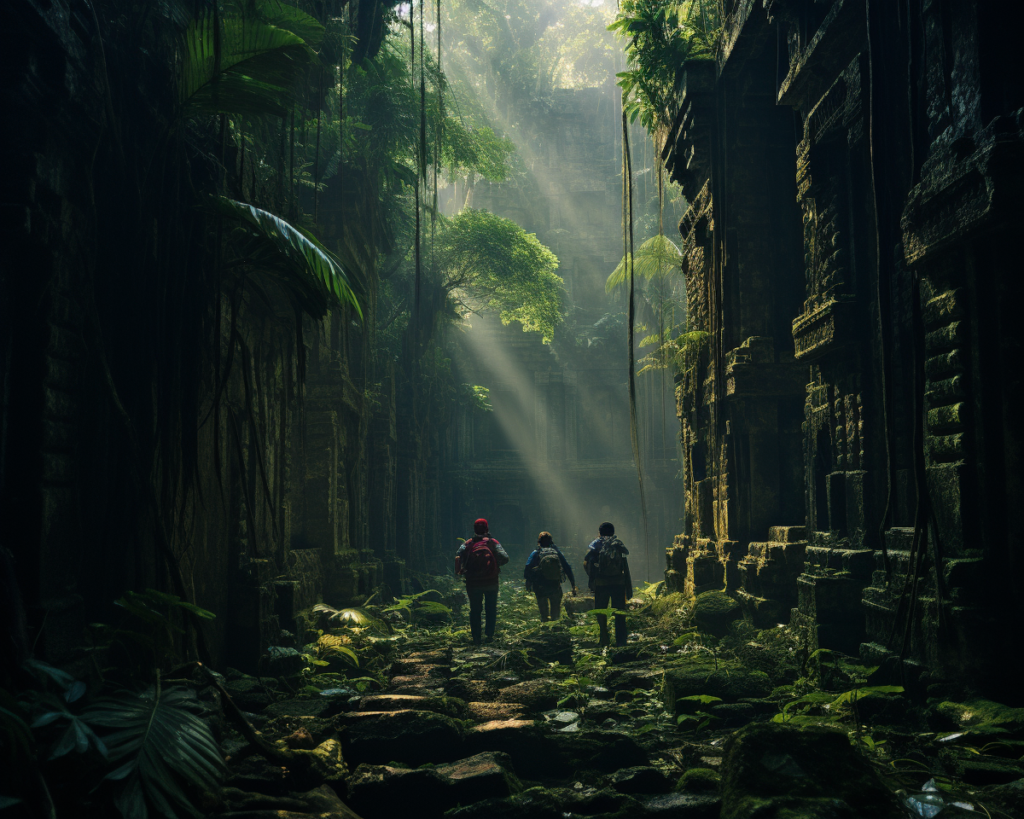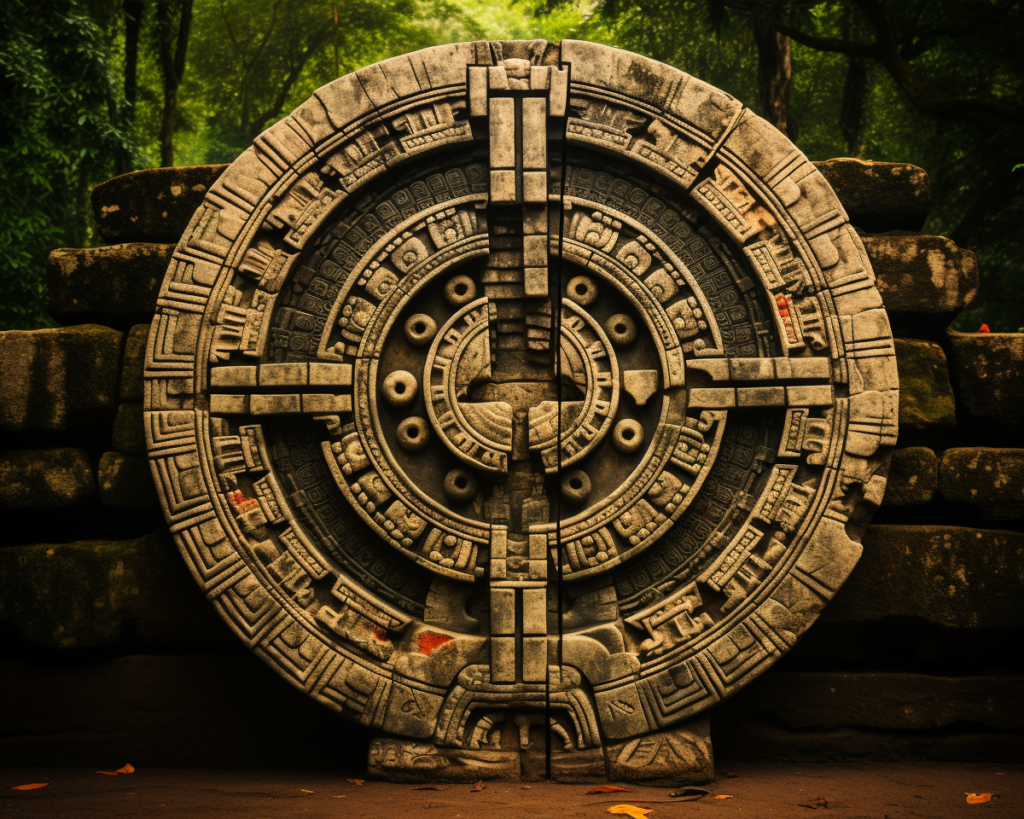Geographical Location of the Mayan Empire
The Mayan civilization was located in Mesoamerica, a region that includes parts of Mexico, Guatemala, Belize, Honduras, and El Salvador. The area is characterized by a diverse landscape, including mountains, forests, and coastal plains.
The heartland of the Mayan Empire was in the southern part of Mexico’s Yucatan Peninsula, where the climate is tropical and the land is mostly flat. The region is known for its dense jungles, which made it difficult for early explorers to navigate. Despite this, the Mayans managed to thrive in the area for thousands of years, building impressive cities and developing a sophisticated culture.
- Geographical Location of the Mayan Empire
- Mayan Empire on Map that Still Exist Today!
- Historical Timeline of the Mayan Empire on Map
- Great Guides to Exploring the Mayan Empire
- The Best Tours to Explore the Mayan Empire
- Deciphering the Maya: Not to be Confused with the Aztecs
- The Mayan Epoch: A Timeline Unveiled
- The Vast Dominion of the Mayans
- Exploring the Geography of the Mayan World
- Unlocking the Mayan Mysteries: Religion and Spirituality
- The Mathematical Marvels of the Mayans
The Mayan Empire extended beyond the Yucatan Peninsula, however, and included parts of modern-day Guatemala, Belize, Honduras, and El Salvador. The Mayans built cities throughout this region, many of which are still standing today. These cities were often connected by a network of roads and causeways, allowing for easy travel and communication between different parts of the empire.
The exact boundaries of the Mayan Empire are not well-defined, as the civilization was not a centralized state with a fixed territory. Instead, it was a collection of city-states that shared a common culture and language. As a result, the borders of the empire were constantly shifting, and different city-states would often go to war with each other.
Overall, the Mayan Empire was a complex and dynamic civilization that spanned a large geographical area. Its cities and monuments continue to fascinate and inspire people around the world today.
Mayan Empire on Map that Still Exist Today!
Historical Timeline of the Mayan Empire on Map

The Mayan Empire was a complex civilization that spanned across Mesoamerica from 2000 BC to the arrival of the Spanish in the 16th century. To understand the history of the Mayan Empire, it is essential to look at a historical timeline on a map.
The Mayans had a sophisticated calendar system that allowed them to keep track of time accurately. The calendar system was based on two cycles, the Tzolkin and the Haab. The Tzolkin cycle was a 260-day cycle, while the Haab cycle was a 365-day cycle. The combination of these two cycles created a 52-year cycle called the Calendar Round.
The Mayan Empire experienced several periods of growth and decline, and the timeline on the map can help to visualize these periods. The Mayan civilization reached its peak during the Classic Period (250-900 AD) when they built impressive cities and developed a complex writing system. During this period, the Mayans built iconic structures such as the Temple of the Inscriptions in Palenque and the Pyramid of the Sun in Teotihuacan.
However, the Classic Period was followed by a decline that saw the abandonment of many cities and a shift in power to the northern Yucatan Peninsula. The Postclassic Period (900-1521 AD) saw the rise of the Toltecs and the Aztecs, who eventually conquered the Mayans.
In conclusion, a historical timeline on a map can provide a visual representation of the rise and fall of the Mayan Empire. The timeline can help to understand the significant events that shaped the Mayan civilization, such as the Classic Period and the Postclassic Period.
Where Was the Mayan Empire on Map Located?
Our quest begins with a fundamental question: Where did the Mayan empire flourish? Picture a map of Central America, and let’s zoom in on the southeastern region. There, nestled amidst the dense rainforests and misty mountains, lay the captivating lands of the Maya.
The Mayan empire sprawled across what is now modern-day Mexico, Guatemala, Belize, Honduras, and El Salvador. Imagine these vibrant lands as the canvas upon which the Mayans painted their rich tapestry of culture and history.
Great Guides to Exploring the Mayan Empire
- Discover the Mysteries of Uxmal: A Complete Guide to the Ancient Ruins – Uncover the secrets of Uxmal’s ancient wonders in this comprehensive exploration.
- Explore Mexico’s Rich History: 10 Best Mayan Ruins You Must Visit – Delve into the Mayan world with our top picks of must-visit ruins in Mexico.
- Coba Ruins: A Journey Through Time – Embark on a historical adventure as we unravel the mysteries of the Coba ruins.
- The Ultimate Guide to Chacchoben Mayan Ruins: Day Itinerary Included – Plan your perfect day at Chacchoben with our comprehensive guide and itinerary.
- Best of Coba Ruins in Mexico: A Spectacular Journey – Experience the highlights of Coba’s enchanting ruins in this captivating exploration.
- 34 Most Important Mayan Ruins Sites That Still Exist Today – Dive into the incredible world of Mayan civilization with this extensive list of must-visit ruins.

The Best Tours to Explore the Mayan Empire
- Cancun: Take a 8-hour tour to Chichen Itza, one of the Seven Wonders of the World. You’ll also visit a cenote, a natural swimming hole, for a refreshing swim.
- Riviera Maya: Visit two of the most popular Mayan ruins in the Riviera Maya on a 8-hour tour: Tulum and Coba. You’ll also have the opportunity to climb to the top of Coba’s Nohoch Mul pyramid.
- Playa del Carmen: Spend 12 hours at Xcaret Park, an all-inclusive park with a variety of activities, including swimming in cenotes, exploring Mayan ruins, and watching shows featuring traditional Mexican culture.
- Merida: Take an 8-hour tour to Uxmal, a UNESCO World Heritage Site, and a cenote for a refreshing swim.
- Costa Maya: Visit three lesser-known Mayan ruins in the Costa Maya region on a 8-hour tour. You’ll also have the opportunity to swim in a cenote.
Deciphering the Maya: Not to be Confused with the Aztecs
Before we delve deeper, let’s clear the mist of confusion: Are Aztec and Mayan civilizations one and the same? The answer, my fellow adventurers, is a resounding no.

Are Aztec and Mayan the Same?
Think of the Mayans and the Aztecs as two distinct melodies in the symphony of ancient Mesoamerica. While both civilizations thrived at different times and shared some cultural elements, they were as distinct as a jaguar and a macaw in a lush rainforest.
The Mayans predate the Aztecs by several centuries. Picture the Mayans as the virtuoso composers of the ancient world, crafting complex calendars, hieroglyphics, and awe-inspiring temples. In contrast, the Aztecs, like the emerging crescendo of a symphony, rose to prominence later in history.
The Mayan Epoch: A Timeline Unveiled
As we journey further into the heart of Mayan history, let’s uncover the pivotal milestones that marked their rise and fall.
When Did the Mayan Empire Start and End?
Imagine a Mayan calendar, a circular masterpiece of timekeeping. The Mayan empire, much like the intricate gears of that calendar, began its celestial journey around 2000 BCE. This was an era when the ancient world was still finding its rhythm.
The Mayan civilization, like a blazing comet, reached its zenith during the Classic Period, around 250 to 900 CE. During this time, their cities flourished, intricate art adorned their temples, and their influence rippled across the region.
But like all great stories, the Mayan tale had its twilight. By the time the calendar reached 900 CE, the once-thriving cities began to crumble, and the empire entered a period of decline. The reasons for this decline remain shrouded in mystery, like a fading constellation.
The Vast Dominion of the Mayans
Our journey through time and space wouldn’t be complete without a glimpse into the vast dominion the Mayans ruled.

What Countries Did the Mayans Rule?
Picture the Mayans as the maestros of Mesoamerica, their influence extending across borders. They held sway over the lush landscapes of present-day Mexico, Guatemala, Belize, Honduras, and El Salvador. These territories, under the Mayan rule, were like different chapters in a sprawling novel, each with its own unique story to tell.
As we continue our expedition, keep your curiosity alive, for there are more wonders and mysteries to uncover. The Mayan empire, with its intricate hieroglyphics, breathtaking architecture, and cultural riches, promises to be a captivating journey through time and culture. Together, let’s unearth the treasures of this ancient civilization and revel in the tapestry of the past they left behind.
Exploring the Geography of the Mayan World
Now, let’s turn our attention to the captivating geography that framed the Mayan civilization.
The Mayan Landscape: A Mosaic of Diversity
Envision the Mayan world as a magnificent mosaic. From the volcanic peaks of Guatemala to the pristine beaches of Belize, the Mayan realm offered a breathtaking diversity of landscapes. Within this mosaic, they carved out their homes, farms, and cities, adapting to the ever-changing terrain.
The dense rainforests provided sustenance and shelter, while the fertile lowlands near riverbanks yielded bountiful crops. And high in the mountains, they built their temples, reaching for the heavens like the towering ceiba trees that pierced the forest canopy.
Unlocking the Mayan Mysteries: Religion and Spirituality
As we traverse the Mayan landscape, let’s dive into the depths of their spirituality.

The Heartbeat of Mayan Spirituality
The Mayans, like astronomers of the soul, gazed at the cosmos with reverence. Their religion was a complex tapestry, woven with threads of deities, rituals, and cosmology. They believed the gods influenced every aspect of life, from agriculture to warfare.
Imagine their temples as celestial observatories, where priests tracked the movements of stars and planets. These celestial dances guided the timing of ceremonies and agricultural activities, ensuring harmony between the earthly and the divine.
The Mathematical Marvels of the Mayans
Now, let’s venture into the intriguing world of Mayan mathematics, where numbers held the keys to unraveling cosmic mysteries.

Mathematics: The Mayan Legacy
Think of Mayan mathematics as a treasure chest of intellectual prowess. Long before calculators and computers, the Mayans devised a sophisticated numerical system based on dots and bars. It allowed them to perform complex calculations with astonishing precision.
Their mathematical marvels extended to their calendar systems, which were as intricate as a finely tuned timepiece. They tracked time with precision, decoding the rhythms of the universe with mathematical elegance.
Mayan mathematics is renowned for its unique numeral system, which uses a combination of dots and bars to represent numbers. Let’s explore some examples of Mayan numbers:
- The Mayan Numeral System:The Mayan numeral system is vigesimal, meaning it’s based on 20 rather than 10 as in our decimal system. Here’s how it works:
- A dot represents 1.
- A bar represents 5.
- Dots and bars are combined to form numbers.
- Mayan Number Representations:Let’s represent some numbers using Mayan numerals:
- 1: A single dot.
- 5: A single bar.
- 10: Two bars.
- 15: Three bars.
- 20: A single dot in a different place (similar to how we use the next place value in our decimal system).
- Complex Mayan Numbers:Mayan numbers can get more complex. For example:
- 23: A dot in the second place (for 20) and three dots in the first place (for 3), represented as a dot over a horizontal bar.
- 49: Two dots in the second place (for 40) and four dots in the first place (for 4), represented as two dots over four dots.
- 125: A dot in the third place (for 100), a bar in the second place (for 5*20), and five dots in the first place (for 5), represented as a dot over a bar over five dots.
- Mayan Calendar Math:Mayans used their numerical system extensively in their calendar systems. For example, they had a Long Count calendar, where they represented dates with a series of numbers.
- An example of a Long Count date is 9.14.0.0.0, where each position represents a different place value. The first position represents 920^4 (approximately 144,000 days), the second 1420^3 (approximately 28,000 days), and so on.
- Mayan Mathematical Operations:Mayans also performed mathematical operations using their numeral system. Addition and subtraction were done by combining or removing dots and bars. For instance, to add 7 and 9, they would combine the dots and bars for 7 and 9 to get 16.
The Mayan numeral system was a remarkable achievement in mathematics, allowing them to perform advanced calculations, track time with precision, and record numerical information in their inscriptions. It’s a testament to their mathematical sophistication and their unique contributions to the world of mathematics.
As we continue our expedition, keep your curiosity alive, for there are more wonders and mysteries to uncover. The Mayan empire, with its intricate hieroglyphics, breathtaking architecture, rich spirituality, and mathematical brilliance, promises to be a captivating journey through time, culture, and knowledge. Together, let’s unearth the treasures of this ancient civilization and revel in the tapestry of the past they left behind.





